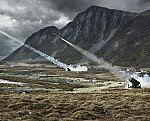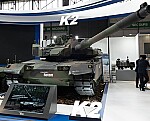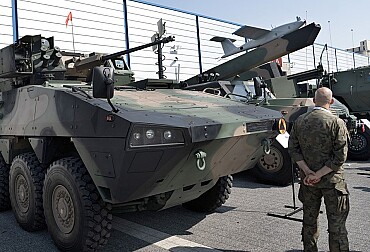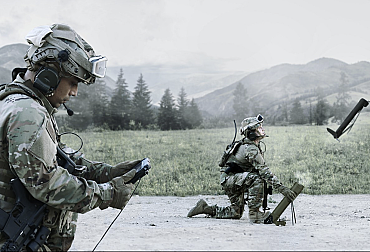Near miss in Pokrovsk: How an M2A2 Bradley defied a Russian drone attack
The M2A2 Bradley Infantry Fighting Vehicle has gained a strong reputation in Ukraine as one of the most resilient and admired combat systems on the battlefield. However, a recent failed Russian drone strike near Pokrovsk has demonstrated that sometimes, survival is dictated by mere millimeters rather than armor plating. This incident sheds light on the evolving nature of modern warfare, where drones play an increasingly decisive role, and highlights the exceptional durability of the M2A2 Bradley.
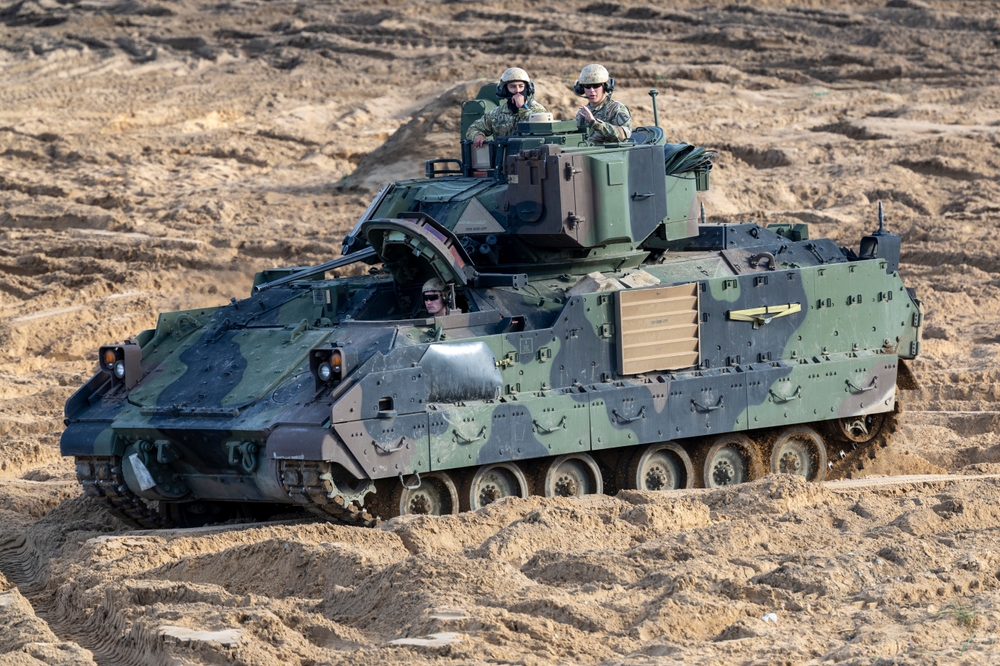
The Evolution of M2A2 Bradley’s Armor Protection
Initially, the U.S. Army had reservations about the Bradley Fighting Vehicle, as its aluminum construction did not provide adequate protection for both the crew and dismounted infantry. The introduction of the M2A2 variant in 1988 addressed these concerns with significant armor enhancements. Originally, the Bradley's aluminum hull was supplemented with steel plating. However, the upgrade program significantly improved its survivability by adding composite armor plates—31.8 mm thick—on the hull floor, sides, and the front and right side of the turret.
These upgrades not only strengthened the vehicle’s base armor but also made it possible to install additional protection, such as Explosive Reactive Armor (ERA). The rear of the vehicle received laminated inserts to enhance its defensive capabilities further. This layered armor approach substantially increased the Bradley’s ability to withstand direct hits from weapons like 30mm Armor-Piercing Discarding Sabot (APDS) rounds and rocket-propelled grenades (RPGs). As a result, the M2A2 Bradley emerged as a far more resilient and effective infantry fighting vehicle.
Performance Enhancements and Combat Effectiveness
The improvements made to the M2A2 Bradley extended beyond armor protection. According to Military News, the vehicle’s top speed decreased from 66 km/h to 56 km/h despite an engine upgrade that boosted power from 500 to 600 horsepower. This trade-off was necessary due to the increased weight—empty, the vehicle now weighs 27,220 kg, while a fully armed and operational M2A2 exceeds 33 tons.
Despite the added weight, the Bradley’s primary armament remained unchanged. It continues to be equipped with the 25mm M242 Bushmaster autocannon, which has proven effective in various combat scenarios. Ukraine has particularly praised the Bradley’s performance, with reports from EssaNews confirming that some M2A2 Bradleys have successfully withstood direct hits from Russian ATGM Kornet missiles—the most advanced portable anti-tank weapon available to Russian forces.
One of the most notable engagements involving the M2A2 Bradley was a confrontation between two Bradleys and a Russian T-90M main battle tank. As detailed by Popular Mechanics, a design flaw in the T-90M’s turret caused it to spin uncontrollably after being hit, forcing the tank’s crew to abandon the vehicle. This engagement highlighted both the Bradley’s durability and the limitations of even Russia’s most modern armor.
The Pokrovsk Drone Incident: A Narrow Escape
The incident near Pokrovsk stands out as an extraordinary example of battlefield survivability. Video footage shows a guided Russian drone, appearing as a small white UAV, locking onto an M2A2 Bradley. Initially, it aimed for the center of the vehicle but adjusted its trajectory when the rear hatch unexpectedly opened. The drone operator seemingly attempted to fly it directly inside the vehicle, likely aiming for maximum lethality.
However, the UAV failed to enter through the open door and instead crashed onto the ground just outside. A mere two seconds later, the drone detonated. Remarkably, the explosion was absorbed by the vehicle’s rear bumper and outer armor, leaving both the Bradley and its crew unscathed. The armored vehicle continued its mission uninterrupted, even though everyone onboard had come dangerously close to death.
Drones in Modern Warfare: A Game-Changer
The war in Ukraine has demonstrated that both defenders and aggressors must contend with an unprecedented level of drone warfare. Unmanned Aerial Vehicles (UAVs) are now a constant presence on the battlefield, often operating unnoticed by ground troops. Russian and Ukrainian drone operators have reached an exceptional level of proficiency, making these unmanned systems increasingly lethal.
The Pokrovsk incident underscores how even the most well-armored vehicles can be vulnerable to drone strikes, depending on targeting and operator precision. Had the UAV successfully penetrated the vehicle’s interior before detonation, the crew’s survival chances would have been slim. The event also highlights the psychological toll of drone warfare, as soldiers must remain constantly aware of the silent, invisible threats hovering above them.
In 2023 alone, Ukraine reportedly produced over one million drones, significantly outpacing Russian drone manufacturing. While these small robotic aircraft continue to play a crucial role in reconnaissance and strike missions, their psychological impact on soldiers is undeniable. As drone warfare evolves, military forces worldwide must adapt to new threats, emphasizing counter-UAV strategies alongside traditional armor protection.
Conclusion
The M2A2 Bradley’s survival near Pokrovsk is a testament to both the vehicle’s robust design and the unpredictable nature of modern combat. While its armor enhancements have proven effective against conventional threats like ATGMs and tank rounds, the increasing prevalence of UAVs presents a new challenge for armored warfare. As drone technology advances, battlefield tactics will need to evolve, ensuring that armored vehicles remain a vital component of modern military operations. The Pokrovsk incident serves as a powerful reminder that in war, even the smallest factors—such as a drone’s trajectory—can mean the difference between survival and catastrophe.





